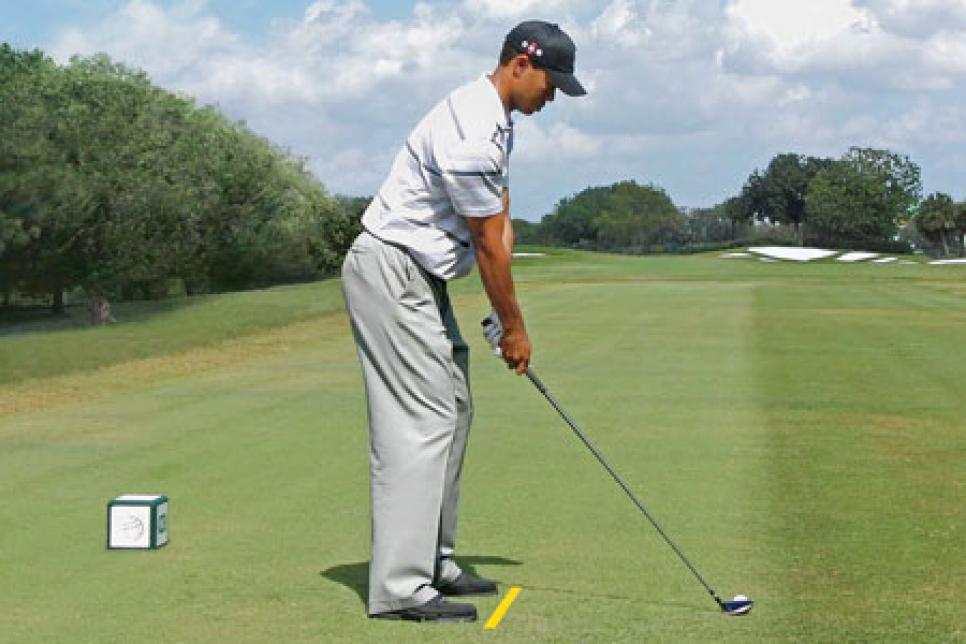Instruction
How To Draw Your Tee Shots

As a result of recent swing changes, it's easier for me to shape tee shots, even my natural draw. I'm letting the club release along the line of my setup instead of muscling the ball with my upper body, which I did at times when my bad knee prevented a good shift into impact.
For me, hitting a draw starts with the setup. I take a slightly closed stance and get into a tall, athletic posture. I want to stay tall throughout the swing and avoid a tendency to dip my head coming down. If my head drops, I tend to react by either coming out of the shot and pushing it right, or overcooking it to the left.
Now that my left knee is repaired and my lower body is stable, I can hit a draw by making an aggressive shift into the ball and swinging along my stance line. For me, the key is the point of release: To hit a draw, I feel as though the back of my left hand squares to the target a couple of inches before the ball.
The shot starts to the right and curves left. All of my shot-shaping is better now because I can stay in my posture and put that release in at the right time for the shot I'm trying to hit.
The Long Bunker Blast
__ Add distance by turning your body faster __

At the tour level you have to be able to hit different sand shots, because the bunkers are so varied and a stroke saved can make all the difference. One of the toughest shots is when you have to get the ball up to clear the lip but also hit it long enough to reach a back pin.
For this shot, I use body turn to propel the ball. A lot of average golfers try to do it with the hands and arms.
To hit the shot far enough, I swing back about three-quarters, keeping my lower body still, and then turn through to a nice, balanced finish. I control the distance with the speed that I turn my body through. The longer I need to hit it, the faster I rotate. That keeps me from having to change clubs or ball position -- drawbacks of the more handsy technique.
Everything else is the same as my standard bunker shot: slightly open stance, ball just forward of center, clubface open but square to the target and a more vertical backswing.
Ask Tiger
HOME FRONT
Q. How hard is it to leave home now that you have two small children?
--Angela O'Brien Worcester, Mass.
A. It's tough. Sometimes you just don't want to leave them. But it's all part of being a professional athlete. We have to travel a lot, and there's no getting around that. What I have done is adjust my practice schedule so I can be around Sam and Charlie as much as possible when I'm at home.
OUT OF GAS?
Q. Do you ever get physically tired playing tournaments?
--Dickie Chisolm, Milwaukee
A. No. That's why I train so hard off the course. I feel just as fresh on the 18th hole as I do on the first hole, and just as good on Sunday as I do on Thursday. If I didn't, I'd know I wasn't working out enough.
*Tiger Woods writes instruction articles only for Golf Digest. *
Mark Soltau is a contributing editor to Golf Digest and the editor of TigerWoods.com.